About 50% of the cotton plants in the cotton field start to turn a sliver, which means that they enter the opening stage. The period of spurting is the time from the end of the sliver to the end of flowering. China's cotton generally starts to boil in late August or early September, and it ends in mid-November and lasts for 70-80 days.
First, the fertility characteristics of fertility and fertility of long-term cotton into the boll opening period, vegetative growth gradually stopped, and gradually entered a period of complete reproductive growth, leaf color from the bottom up gradually yellowing, photosynthetic ability decreased, the ability of root absorption weakened. The cotton bolls in the lower part of the cotton plant are continuously bolling, and the development of the bolls in the middle and upper parts is an important period for increasing the boll weight, improving the lint and fiber quality. This period, such as every rain and rain, often causes bad bells. In case of drought, it reduces the boll weight and fiber quality.
The longevity of the high yield cotton boll opening period is as follows: premature and not premature aging, the requirement is that the lower part of the cotton plant boils, the upper part continues to bloom, and the late buds are few, and the northern part begins to break off in late August or early September. Strongly growing cotton, the top of the fruit branches stretch, fruit branches 20 to 30 cm long, with 3 to 4 large buds, if the top fruit branches stretch too long, grow upward, axillary buds clustered, broken flower is too late to grow and greed Late performance. The leaf area coefficient at the initial stage of boll opening stays at 2.5 or so, and gradually decreases. If the leaf area is too large, it may easily cause field confinement and delay the opening of the boll; on the contrary, it may cause premature failure and reduce the boll weight. The ideal long-term standard for Botou period is: density is reasonable, Fumo is full of waist, autumn peach covers the top, bell is big, there are few rotten bells, and there is no sputum, no premature aging, 40,000 to 50,000 fruit branches per acre, and 50,000 bells per mu. 80,000.
Second, the main contradiction in the production of boll-opening period is premature aging, the second is the late-ripening of greediness, and the third is the harm of pests and diseases. The requirements for environmental conditions when cotton enters the boll opening period are: the weather is clear, there is plenty of sunshine, the air humidity is low, and the air temperature is above 20°C, which is good for cotton development and boll opening. But often due to fall hang, severe drought, due to lack of soil moisture, the roots absorb water, the photosynthesis of the leaves is blocked, forcing the middle and lower bells boll prematurely, the upper young stop growing, especially when the cream came too early, seeds and fiber Can not normally mature, resulting in reduced production; some years encountered continuous autumn and winter, due to low temperature, high humidity, widows caused by rotten bell; and due to sowing late, long growth period of varieties, over-application of nitrogen fertilizer and other reasons cause late-maturing lust. During the boll opening period, cotton pests often become explosive hazards.
Third, the field of management during the opening of the field of opening up the field management main direction is to promote premature aging prevent premature aging. It is required to maintain roots, protect leaves, preserve peaches, increase weight, increase clothing weight, prevent rotten bells, ensure early maturation, speed up boll opening, and ensure increased production and income.
1. Watering and flood prevention. The rainfall in Fuli is small and the drought is short in the later period. Water should be promptly applied to promote the role of water in promoting fertilizer, prevent premature senescence, prolong the functional period of leaves, enhance the accumulation of photosynthetic products, increase the weight of bolls, increase boll weight and improve seed maturity. Degree and fiber quality. When the soil moisture is lower than 60% of the field capacity in the middle and late August, it should be watered immediately. The drought can be poured into the middle and late September, and the water must be poured to prevent flooding. Watering should not be too late to prevent late-growth greed. In the event of more rain, pay attention to flood prevention.
2. Pruning. Late pruning can improve the ventilation and light conditions of the cotton field, reduce nutrient consumption is conducive to increase peaches, increase weight, promote early maturing, prevent rotten bell. In the north, the buds after August 5 and the flowers after September 1 are ineffective buds and should be promptly removed. Individuals in the later days will have a strong growth potential. The cotton fields that are heavily closed will also have to fight old leaves, cut empty branches, push the strains and ridges, and prevent bad bells.
3. Control insects and prevent diseases. After the cotton enters the boll opening stage, there are more sudden diseases and insect pests. There are mainly four generations of cotton bollworms, which mainly affect summer cotton and late-maturing cotton. The bridge-building insects and beet armyworm are emergent pests, and the initial period is in mid-late August. In August and September, the above-mentioned pests should be checked in time to seize the hatching period for prevention and control. Before the third instar, the main pesticides are fipronil, benzol, methoquinone, malathion, acetyl Methamidophos, phoxim, etc.; in addition to whitefly, red spider, hummer, autumn pheasant and so on. Should be promptly controlled. Disease is mainly caused by the bell blight and other rotten bells, effective agent is mancozeb. For the cotton fields that have been devastated, to reduce the loss, the cotton bolls with dark spots can be picked off as soon as possible, soaked in a 1% solution of ethephon, and dried to obtain better seed cotton.
Fourth, due to local conditions ripening due to a variety of reasons, each part of the late cotton bolls can not normally mature, especially in summer sowing cotton, late cotton, cotton and saline cotton and other late-maturing cotton fields and other late-maturing cotton bells more, not only impact Production, but also reduce the quality, so the use of appropriate ripening measures can accelerate the development of bolls, boll early, increase the production of frost before flowers. Common ripening methods are:
1. Ethephon ripening. Applicable to high-yield cotton fields with more growth in the future than in Wangqingling. Use the appropriate time to master the following three conditions: The bell period of the peripheral ring of the cotton plant is more than 40 days; 15 to 20 days before the frost period; the daily maximum temperature is greater than 20°C. Shi. To prematurely make the bolls unripe before opening, reduce the weight caused by bolls, use too late, due to low temperature and slow release of ethylene, reduce the ripening effect. 40% of the amount of mu of water solvent, 150 to 200 ml per mu, 50 to 60 kg of water, even spray, spraying as much as possible in the Qingling on the bell, in order to improve the ripening effect, 6 hours after spraying rain heavy spray.
2. Without trace ripening. Applicable to late but late ripening and intercropping, interplanting (planting) cotton fields, so as to urge the leaves early, which is conducive to ventilation. The ripening time generally grasps the external bolling period of cotton for more than 40 days, and is suitable for about 10 days before the frost. The mu is used without traces of 50 ml, and the water is 30-40 kg. It is uniformly sprayed up and down, and leaves can be deposited within 7 days. , 7 to 8 days up to the peak of boll opening, when the fight drugs, pay attention to prevent liquid spray into the eye.
3. Pull dry to ripen. Applicable to cotton, wheat, cotton (rapid rape) two cooked back to the live (planted) cotton field. The key is to have a good grasp of time and time, and the time is well mastered. It will not only affect the production of cotton, but will also be able to unload it early. The determination of the dry-out time is based on the calculation of the bell-time, and the main query is the time for the temperature to decline steadily to 15°C over the years. Because the cotton fiber below 15°C has stopped growing, it will not affect the output. For example, according to the meteorological data of the past years, Hebei cotton and wheat ripening cultivation, cotton drying time in October 10 to 15 is appropriate, so that can not only timely cultivating glutinous rice, but also improve the cotton grade and yield.
V. Having a good harvest of flowers The Guoxin Agricultural Research Institute has refined the key technologies for the large-scale production of cotton into three categories. One is to sow seedlings, the other is to control grassland and insect pests, and the third is to collect flowers. Accepting good harvests not only can produce bumper harvests, but also improve cotton grades and increase profits. The following points should be achieved if there is a good collection of flowers: The first is to collect it in time, not to pick up the cotton, and not to spray it. Generally 7 days after the cotton cracking, the fiber quality is the best, so the best one is 7-10 days. The premature fiber is immature, the moisture is great, and the bad flowering will affect the grade. The cotton wool will be affected by the wind and rain. Not only is it easy to be contaminated, but also the fibers are easily oxidized and become brittle, thicker and less strong. The second is strictly to achieve "five points, four nets, two no, one to prevent." The "five points" are the seed cotton, good flower, secondary flower, fragrant flower, pre-frost flower, and post-frost flower of different varieties or the same variety. The collection, distribution, storage, distribution (sale), and partial rolling are carried out. . "Four nets" is the flower on the cotton tree net, the picking on the cotton boll, the flowers on the floor, the netting on the cotton wool to the net. "Two does not accept" is immature, no dew. “One prevention†is to take various measures to prevent the three threads from mixing into the raw cotton, such as cleaning the three sources of the field before turning the slivers, such as plastic bags, films, etc., picking up the flowers, wearing a hard hat when drying flowers, picking cotton, storing cotton, sending Cotton does not use plastic woven bags, plastic bags, plastic rags, plastic ropes, and so on. No animals such as chickens, cats and cats are allowed to enter the field and on the spot during the process of cottoning and drying.
Intermediates of Cladribine, Carvedilol, Lurasidone, olmesartan, Risedronate Sodium, Atazanavir, Saxagliptin, Dabigatran,Dapoxetine,Cefixime,Ceftaroline fosamil and etc.
In the short span of time, we have emerged as most promising pharmaceutical intermediates manufacturers, chemical intermediates and bulk drug intermediates suppliers. Our consistent supply, quality products and dedication towards clients have opened up many international avenues for our growth.
In addition, the company also can follow the customer's product needs custom synthesis services
MAIN API PRODUCTS USP/BP
|
PRODUCT NAME |
CAS NUMBER |
SPEVIFICATION |
|
Azithromycin |
117772-70-0 |
BEP |
|
Cefpirome Sulphate sterile |
84957-29-9 |
USP JP16 |
|
Ceftriaxone Sodium (Sterile) |
104376-79-6 |
USP31 |
|
Cefotaxime |
64485-93-4 |
USP30 |
|
Ciprofloxacin HCL |
85721-33-1 |
USP/BP |
|
Gentamicin sulphate |
1405-41-0 |
BP |
|
Levofloxacin |
100986-85-4 |
USP27 |
|
Lincomycin Hydrochloride |
859-18-7 |
EP6.0 |
|
Moxifloxacin Hydrochloride |
186826-86-8 |
USP31 |
|
Tigecycline |
220620-09-7 |
USP |
|
Linezolid |
165800-03-3 |
EP |
|
Dexamethasone |
50-02-2 |
USP/BP/EP |
|
Methylprednisolone |
83-43-2 |
USP/BP/EP |
|
Dexketoprofen trometamol |
156604-79-4 |
BP2008 |
|
Ibuprofen |
15687-27-1 |
BP |
|
Metamizol |
68-89-3 |
DAB |
|
Sulindac |
38194-50-2 |
USP/BP/EP |
|
Naproxcinod |
163133-43-5 |
USP28 |
|
Tripelennamine Hydrochloride |
154-69-8 |
USP28 |
|
Itraconazole |
84625-61-6 |
USP/BP |
|
Cytarabine |
147-94-4 |
USP31 |
|
Leucovorin Calcium |
1492-18-8 |
USP32 |
|
Valsartan |
137862-53-4 |
USP30 |
|
Telmisartan |
144701-48-4 |
USP31 |
|
Rosuvastatin Calcium |
147098-20-2 |
USP/BP |
|
Pitavastatin Calcium |
147526-32-7 |
USP/BP |
|
Fluvastatin |
93957-54-1 |
USP31 |
|
Vinpocetine |
42971-09-5 |
EP6.0 |
|
Atazanavir |
198904-31-3 |
BP |
|
Rosiglitazone |
122320-73-4 |
USP30 |
|
Esomeprazole Magnesium |
161973-10-0 |
USP/BP |
|
Topiramate |
97240-79-4 |
USP31 |
|
Fexofenadine HCl |
153439-40-8 |
Inhouse |
|
Bosentan |
147536-97-8 |
Inhouse |
|
D-Cysteine |
921-01-7 |
Inhouse |
|
D-Phenylalanine |
673-06-3 |
Inhouse |
|
Linagliptin |
668270-12-0 |
Inhouse |
|
Rivaroxaban |
366789-02-8 |
USP |
|
Saxagliptin |
361442-04-8 |
USP |
|
Vildagliptin |
274901-16-5 |
USP |
Major Pharmaceutical Intermediates
| Items Descripation | Structure | Application |
|
MICA ESTER CAS No: 246035-38-1 Purity: ≥98% |
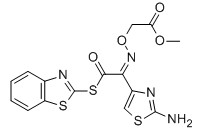 |
For Cefixime |
|
EHATA CAS No: 64485-82-1 Purity: ≥98% |
 |
For Ceftazidine |
|
2-Chloroadenine CAS No: 1839-18-5 |
 |
For Cladribine, Fludarabine et al |
|
Bicyclo(2,2,1)Heptane-2,3-di-exo-carboximide CAS No: 14805o-29-9 |
 |
For Lurasidne |
|
(R,R)-1,2-Bis(methanesulfonyloxy methyl)Cyclohexane CAS No: 186204-35-3 |
 |
For Lurasidone |
|
3-(Piperazin-1-yl)benzol[d] isothiazole CAS No: 87691-87-0 |
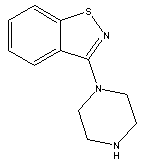 |
For Lurasidone |
|
Trityl olmesartan CAS No: 144690-92-6 Purity: ≥98% |
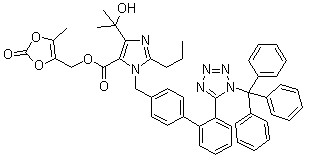
|
For olmesartan |
|
3-Acetyl Pyridine CAS No: 350-03-8 |

|
For Risedronate Sodium |
|
3-(AceticAcid)pyridine HCL CAS No: 6419-36-9 |
 |
For Risedronate Sodium |
|
Risedronic Acid CAS No: 105462-24-6 |
 |
For Risedronate Sodium |
|
3-Hydroxy-1-adamantyl-D-Glycine CAS No: 709031-29-8 |
 |
For Saxagliptin |
|
(1s,3s,5s)-3-(aminocarbonyl)-2-azabicyclo(3,1,0) hexane-2-carboxylic acid tert-butyl ester CAS No: 361440-67-7 |
 |
For Saxagliptin |
|
(S)-N-Boc-3- hydroxy-adamantylglycine CAS No: 361442-00-4 |
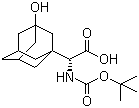 |
For Saxagliptin |
|
2-Azabicyclo[3.1.0] hexane-3-carbonitrile, (1s,3s,5s)- CAS No: 866083-42-3 |
 |
For Saxagliptin |
|
Ethyl 3-(pyridin-2-ylamino) propanoate CAS No: 103041-38-9 |
 |
For Dabigatran |
|
N-(4-Cyanophenyl) glycine CAS No: 42288-26-6 |
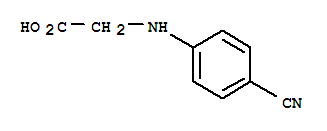 |
For Dabigatran |
|
4-methylamino-3-nitrobenzoic Acid CAS No: 41263-74-5 |
 |
For Dabigatran |
|
S-3-Amino-3-phenylpropanoic acid ethyl ester HCL CAS No: 167834-24-4 |
 |
For Dapoxetine |
|
(S)-3-Amino-3-Phemylpropan -1-ol CAS No: 82769-76-4 |
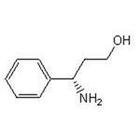
|
For Dapoxetine |
|
(S)-3-Dimethylamino-3-Phemylpropanol CAS No: 82769-75-3 |

|
For Dapoxetine |
|
4-{4-[4-(hydroxydiphenylmethyl)-1-piperidinyl]-1-butynil}-α,α-dimethyl benzene acetic acid CAS No: 832088-68-3 |
For Fexofenadine HCl | |
|
Methyl 2-(4-(4-chlorobutanoyl)phenyl)-2-methylpropanoate CAS No:154477-54-0 |

|
For Fexofenadine HCl |
|
5-Bromo-2-chlorophenyl)(4-ethoxyphenyl)methanone CAS No 461432-22-4 |

|
For Dapagliflozin |
|
4-(5-Bromo-2-chlorobenzyl)phenyl ethyl ether CAS No :461432-23-5 |

|
For Dapagliflozin |
Mica Ester,Pharma Intermediates,Ciprofloxacin Hcl Uses,Active Pharmaceutical Ingredients
NINGBO VOICE BIOCHEMIC CO. LTD , https://www.pharma-voice.com